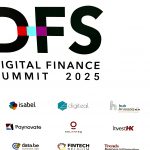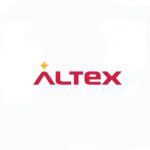Bank-as-a-Service
The bank of the future: what does it look like? What trends are shaping the advancement of the banking sector?
SMART BANKING
Digitalization is the most important trend in almost any industry today. Consumers are accustomed to a high level of comfort: online shopping, next-day delivery, smart household devices, finding traffic-less routes on online maps, paying bills in just one click.
To create flagship products, financial institutions need to understand market tendencies and correctly determine their transformation strategies. As such, the number of neo-banks, or banks that have transferred all their services to the digital environment, has increased in recent years. The neo-bank model is highly efficient and receives positive response from customers who prefer to deal with financial issues remotely. Neo-banks’ success creates a challenge for other market players in terms of convenience for users, since interaction with more conservative banks involves the personal presence of the client at the branch when making a request for a loan, mortgage, account opening and other services.
For a global transition to digital services, banks need to deploy appropriate technological IT systems that have the ability to quickly process a large volume of requests from user devices as well as Internet and mobile applications, allowing them to identify their customers remotely using biometrics.
It is also beneficial for banks to build internal processes that reach customers through digital channels together with financial services’ related partner products — newsfeeds, theater ticket purchases, medical insurance orders, hotel reservations, et cetera. The integration of such additional services expands the bank applications’ functionalities and increases user loyalty, but at the same time requires banks to allocate additional infrastructure capacity to ensure correct performance.
SOLANTEQ QUICKLY RESPONDS TO MARKET CHALLENGES BY ADAPTING ARCHITECTURE TO EMERGING DIGITAL BANKING NEEDS, OFFERING CONVENIENT BUSINESS LOGIC, CLIENT PATHS AND USER-FRIENDLY INTERFACES
BAAS MODEL
The BaaS (Bank as a Service) model is rapidly gaining popularity. Within a BaaS model, a business becomes not only a client, but also a partner, of a bank by renting a banking infrastructure for specific financial tasks. Non-bank FinTech and other third-party providers (TPPs) embed financial services in their business model offerings.
Thus, banks can integrate partner services into their products, and vice versa — provide their financial services through partner applications. On the other hand, non-financial organizations move into the financial sector by receiving information through banks’ open API, and offer their customers additional payments and lending services. Through BaaS, banks receive more customers for their financial products, and businesses integrate necessary tools into their information systems, completely customizing them for themselves.
The BaaS model assumes standalone solutions that can be activated and deactivated as needed. Online stores can connect only payment processing, Internet acquiring or customer virtual payment accounts maintenance, while car dealers may choose to only activate installments and credit products. Having a modular structure, the BaaS model meets the specific requirements of entrepreneurs: any process can be arranged as a separate business application. The implementation of the model almost implies the creation of an individual bank, for a specific purpose.
THE SOLAR SOLUTIONS ALLOWS MULTIPLE FINANCIAL INSTITUTIONS AND DEPARTMENTS TO WORK SIMULTANEOUSLY AND INDEPENDENTLY ON ONE COMMON PLATFORM HOSTED IN A PHYSICAL OR CLOUD DATA CENTER. EASY HORIZONTAL SCALABILITY OF SOLAR COMPONENTS PROVIDES THE PERFORMANCE REQUIRED BY NEO-BANKS, AND A THOUGHTFULLY DESIGNED API SOLVES THE TASKS THAT ARISE WHEN BUILDING A BAAS MODEL


